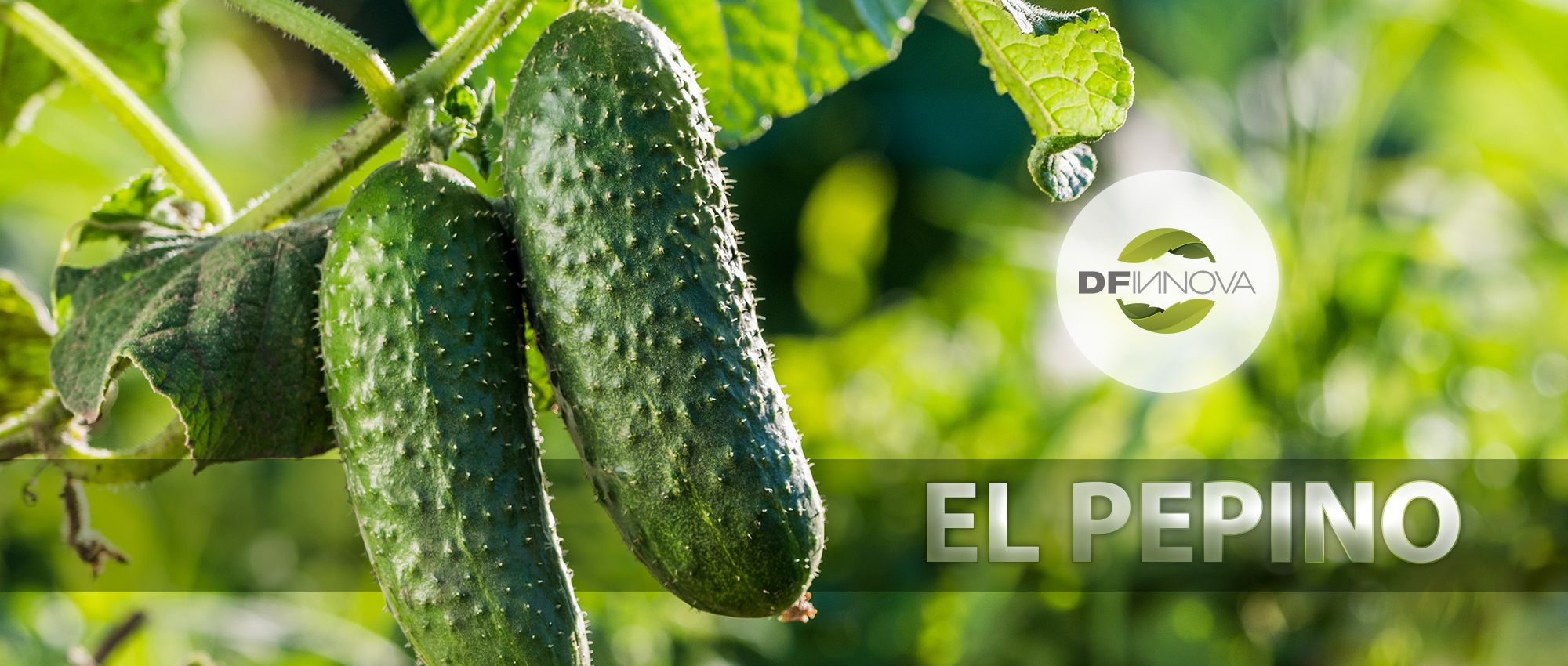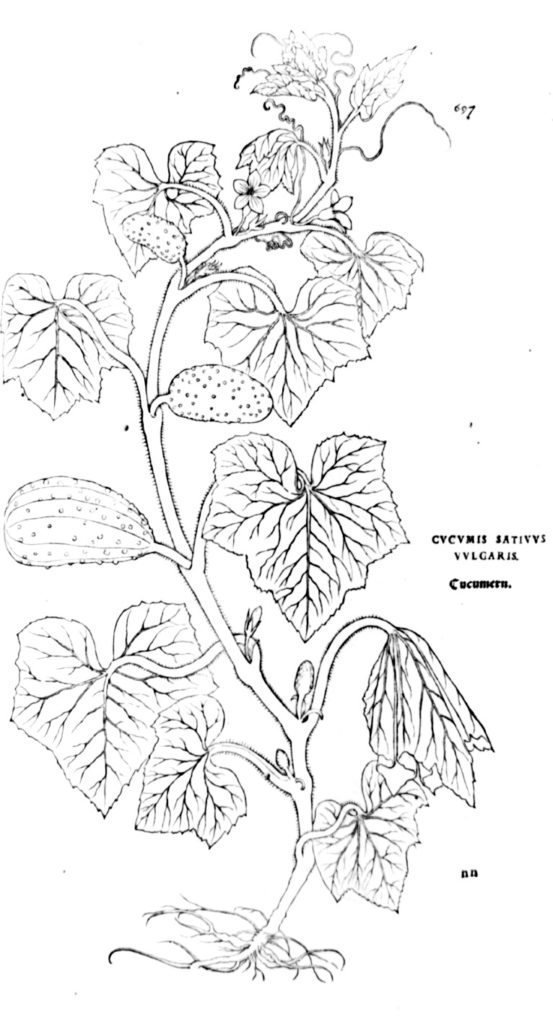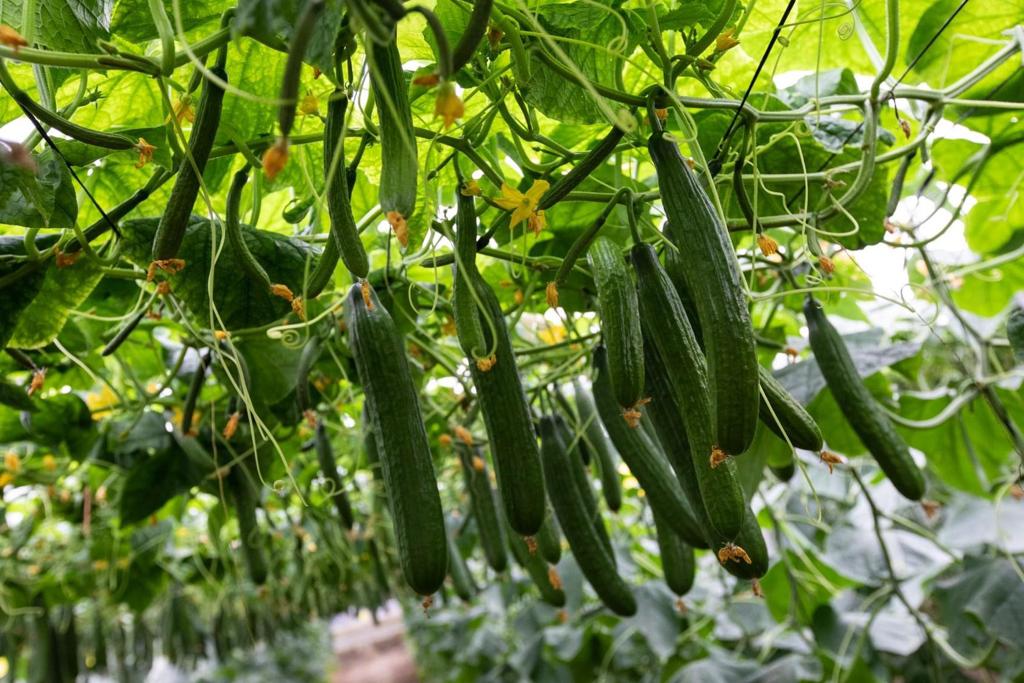
CUCUMBER, VITAL FOR THE SOIL AND FOR US
Cucumber is a crop belonging to the Cucurbitaceae family, with the botanical name Cucumis sativus, genus Cucumis and species, C. sativus.
Cucumbers considered “regular-sized” are destined for eating fresh in salads or as a recipe ingredient; the smaller ones are typically used for processing.
HISTORY
Cucumber originated in South Asia, specifically in the tropical regions, where it has been grown for more than three millennia. It travelled from its place of origin to Greece, and then to Rome, before finally arriving in China. There is evidence that cucumbers were grown and consumed in ninth-century France, fourteenth-century England and mid-sixteenth-century North America, as Christopher Columbus brought seeds to America.
WHY IS IT SO GOOD?
Cucumber may not be our first choice of vegetable for a nutritional punch. But even though it is often relegated to the background, it is still important in our gardens and our diet. For example, its potassium content and low sodium make it an essential ally for tackling high blood pressure or high uric acid. Another tip that we highly recommend is to eat it with all or some of the skin on (after cleaning it well). This will provide more fibre and a significant dose of beta-carotene.
MORPHOLOGY

It has a powerful root system. The root system begins with a main root from which thin, elongated, white secondary roots sprout as the plant grows. It is an annual climbing herbaceous plant. The leaves are simple with a long petiole and large heart-shaped blade, with three pronounced lobes, dark green in colour and usually covered in very fine hairs. The leaves are alternate and opposite to the tendrils. The stem is angular and thorny, with a climbing and scrambling habit, and can reach heights of more than 3.5 metres. Its flowers have a short peduncle and yellow petals, emerging in the leaf axils. They may be hermaphroditic or unisexual. Lastly, the fruit is a pepo that may be rough or smooth, depending on the variety. It changes colour from light to dark green, taking on a yellowish hue when it is fully ripe, though it is usually harvested before it reaches physiological maturity. It has a watery, off-white pulp containing creamy white oval seeds that are usually scattered throughout the fruit.
Short cucumber and gherkin: varieties of small fruit with green skin tinged with yellow or white stripes. For fresh or pickled consumption. The varieties can be monoecious, gynoecious with pollinator and parthenocarpic gynoecious.
Medium-long cucumber. Average length, monoecious and gynoecious. Within these, we can distinguish between the prickly fruit varieties and those with smooth skin or mini cucumbers, which have fully parthenocarpic flowering.
Long cucumber. Fruits longer than 25 cm, gynoecious, fully parthenocarpic fruits with smooth skin and moderate ridging. Much larger leaves.
CLIMATE AND SOIL
Cucumbers are highly adaptable. They are found in many Spanish towns and villages, and can be grown from sea level up to 1,300 metres above. They also have a high tolerance for temperature variation: we can optimise yields between 18 and 25ºC and up to 32 ºC. Above these temperatures, the plants can display certain imbalances that may affect their respiration and photosynthesis. Likewise, night-time temperatures below 17ºC can cause malformations in leaves and fruits.
They require a relative humidity of 70–90% and lots of water. We recommend avoiding excess humidity during the day, as this may reduce yield by conditioning transpiration and, consequently, photosynthesis.
While it can be grown in any type of loosely structured soil, the most favourable soils for cultivation are those with a well-drained sandy clay texture with enough organic matter and a pH between 5.5 and 6.7. Cucumbers are moderately tolerant to salinity but if the concentration of salts in the soil is very high the plants have difficulty absorbing water, their growth is stunted, the stems weaken, the leaves are smaller and darker, and the fruits are likely to curl. If the salt concentration is low, the result is the polar opposite: leafier plants that are more susceptible to different diseases.
PLANTING
To grow cucumber, the soil must be prepared by ploughing and harrowing to give a fine texture and encourage root production. Seeds are sown on mounds or directly in the soil. A distance of 1.2–1.5 metres should be left between furrows. The distance between plants is usually 20 centimetres.
Around 3–4 seeds are sown in each hole, which should be 2–3cm deep. These are later thinned to leave just 1 or 2 plants per hole.
FERTILISING CUCUMBERS
Cucumbers require 150–200 kg/ha of nitrogen and 300 kg/ha of phosphorus. All of the phosphorus and half of the nitrogen are applied during sowing. The remaining nitrogen is applied approximately 30 days after sowing. These amounts are usually supplied by granulated fertiliser with the formula 12-24-12 or 10-30-10, at 1,660kg/ha to supply the phosphorus and half of the nitrogen. Approximately 30 days later, urea or ammonium nitrate may be applied at 138 kg/ha. The banding fertilisation technique is usually used, at a distance of 5 to 10 cm from the seed and a depth of 5 cm.
Naturally, the fertiliser will need to be adapted depending on whether we are growing the cucumber outdoors or if we are fertilising a greenhouse crop.
For an outdoor production of 25–35 tonnes/ha, a recommended fertiliser formula could be:
- Nitrogen (N): 100–120 UF/ha
- Phosphorus (P2O5): 40–50 UF/ha
- Potassium (K2O): 120–160 UF/ha
However, greenhouse-grown cucumbers have much higher yields, since these conditions create the optimal climate for its growth.
- Nitrogen (N): 220–280 UF/ha
- Phosphorus (P2O5): 130–150 UF/ha
- Potassium (K2O): 260–320 UF/ha
No matter where the cucumber is grown, phosphorus is vital for root formation and plays an essential role in fertilisation during the rooting and flowering stages. Calcium has a decisive impact on quality and promotes disease resistance in the plants. The colour and quality of the fruit, along with the vigour of the plant, depend largely on micro-elements such as iron and manganese.

We all know that starting out with a strong, healthy crop is the best option, whether it is grown from seedlings or from seeds. This is a great opportunity for us to tell you about our GREI family, a range of root fertilisers that provide a vital foundation for our crops. The range boosts crop yields and is a vital resource in crop management:
- Reduces the effects of diseases linked to nutritional balances.
- Influences the regulation of water balance in the plant.
This range of solutions harnesses AP® technology, a naturally-derived concentrate rich in betaine and polyols that delivers a triple effect.
- Acts as an osmoregulator, promoting the efficient absorption of water and nutrients without energy costs for the plant.
- Reactivates the opening of acuaporins, specific channels in the symplastic pathway. The higher the rate of opening of these channels, the higher the rate of water and nutrient absorption through the roots.
- Helps regulate nutritional imbalances in different ion ratios (NA/Ca₂+; Na+/K+ and Ca₂+/Mg₂+)
GREI E-LIQ
Solution containing humic and fulvic acids derived from highly humidified leonardite. Helps to alleviate general soil fatigue.
- Improves physicochemical conditions
- Mobilises and releases nutrients in the soil, promoting their assimilation.
- Stimulates root growth and increases crop yield.
GREI ZIRAT
Specially developed to enhance the efficient, quick and energy-free uptake of the essential element zinc, which is vital in such crop establishment processes as germination and transplantation.
- Promotes the rooting and initial growth of crops.
- Ensures better establishment of the crop.
- Increases crop vigour.
GREI EQUAL
Designed to enhance the efficient, quick and energy-free uptake of the nutritional elements calcium and magnesium.
- Induces structured root development responses.
- Stimulates the formation of secondary roots.
- Helps maintain cell membrane structure and integrity, which produces fruits of a superior organoleptic quality.
As you know, at DFINNOVA, you have a team of skilled experts who can help you manage your crops with our wide range of technological solutions, including complete nutrition and biostimulation programmes, to optimise yields.
Reach out to us, we are here to support you and are always happy to help.

